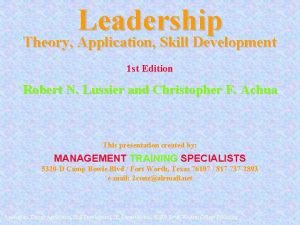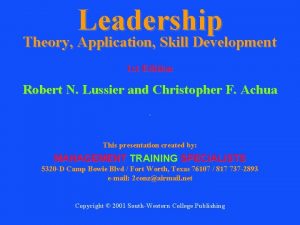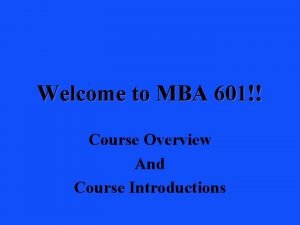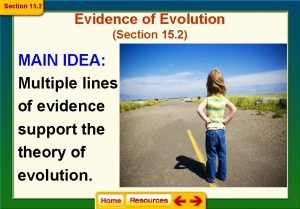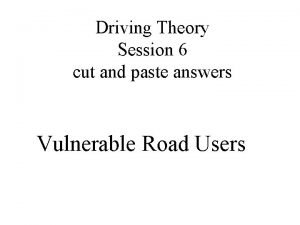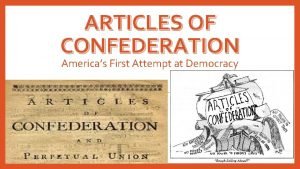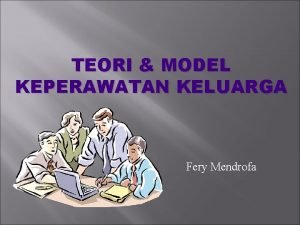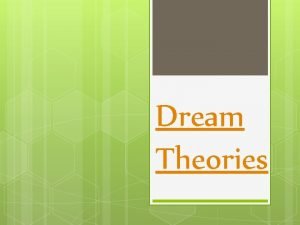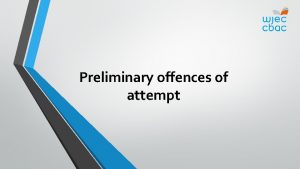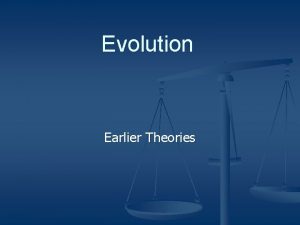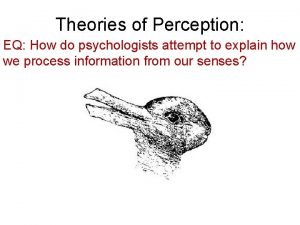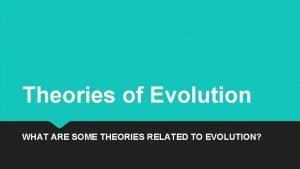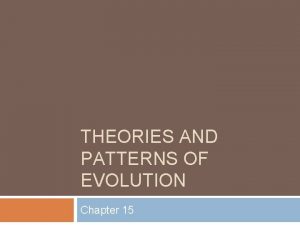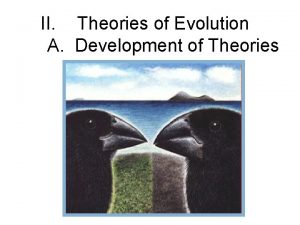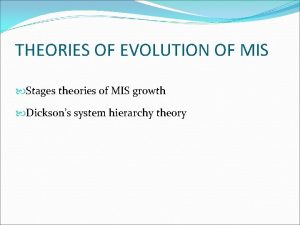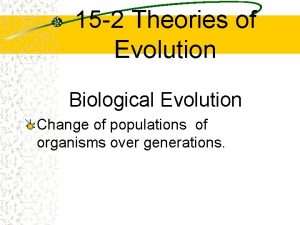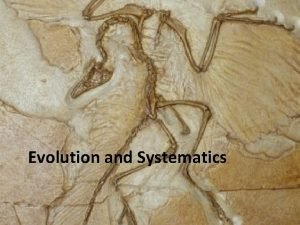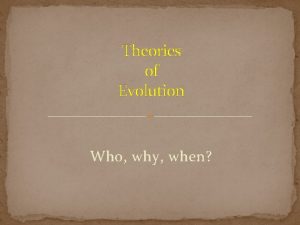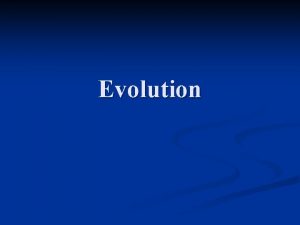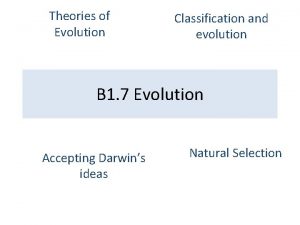Theories of Evolution I Theories of Evolution attempt























- Slides: 23

Theories of Evolution I. Theories of Evolution attempt to explain the diversities among species and the large number of different organisms existing today.

II. Lamarck (1809) A. Lamarck believed that: 1. Species evolved from pre-existing species. 2. Evolutionary changes were a result of an animal’s NEED to adapt to changes in the environment.

B. Lamarck’s theory is based on two principles by which changes occurred: 1. Law of Use and Disuse which states that the more an animal uses a part of its body the stronger it becomes and vice-versa. 2. Inheritance of Acquired Characteristics which means that the characteristics of an organism developed through use and disuse could be passed on to offspring.

C. Problem: Why does the giraffe have a long neck? Answer: According to Lamarck’s theory ancestors of modern giraffes had short necks and ate grass and shrubs. Due to a change in environmental conditions the supply of food on the ground decreased. The giraffes had to stretch their necks to eat leaves on trees. Their necks became longer from stretching and this trait was passed to their offspring.

D. What is wrong about Lamarck’s theory? Lamarck’s theory is wrong because modern genetics has shown that traits are passed from one generation to the next by transfer of genes. Your genetic make-up is not altered by life experiences. Therefore, acquired traits (traits occurring during a lifetime) are not passed to offspring. Specifically, in our example of the giraffe, a “stretched neck” is not passed to offspring.


III. Darwin (1831) A. Charles Darwin, a 22 year-old naturalist, traveled on the H. M. S. Beagle in 1831 to chart the coastline of South America and the Pacific Islands. Darwin’s, observations on the Galapagos Islands led him to believe that organisms can change slowly over time (evolve). He initially studied finches and noticed that each finch on each island was slightly different from each other and from those on the mainland. Darwin felt that the finches, because they were isolated from each other on different islands, had the opportunity to develop adaptations (evolve) differently in each region.


B. Darwin also knew that: 1. For a specific trait, there are variations within a species which are inherited. He did not know about genes but he did know that traits could be inherited (plant and animal breeders). 2. According to Malthus, more people are born than can possibly survive. He called this overpopulation and the growth on the human population is held in check by war, famine, and disease.

C. Darwin observed that this kind of competition for survival occurs all the time in plants and animals. Darwin concluded that organisms with variations that allow them to survive long enough in the environment to have offspring will then pass their variations on to their offspring. Their offspring will in turn have an above average chance to survive and will form a larger part of the population.

As a result of this selection the population will become better adapted to the environment. Darwin called this process natural selection. Natural selection is defined as organisms with favorable variations are better able to survive and reproduce than organisms with unfavorable variations. It is the environment (nature) that determines which are favorable variations.

D. Darwin’s Theory of Evolution is based on the two concepts of : 1. Variations within a species 2. Natural Selection

His theory includes five points: 1. Overpopulation - Within a population more offspring are born than can possibly survive. 2. Competition - Due to limited space and food organisms within a species must compete for the necessities of life. Competition among species members keeps the number of individuals in a population constant. 3. Survival of the Fittest - The individuals who survive are the ones best adapted to exist in their environment. They are the most fit to survive because they possess variations that maximize their fitness.

4. Reproduction - Individuals that survive and reproduce transmit these variations to their offspring. 5. Speciation - Over many generations favorable adaptations accumulate in the species and unfavorable ones disappear, eventually the cumulative changes become so great that a new species is formed.

E. Problem: Why does the giraffe have a long neck? Answer: According to Darwin’s theory, the original ancestral population of giraffes had short necks BUT some giraffes had necks a little longer than others (variation). Longer necked giraffes could eat both grass and leaves on the trees. If the environment changes and the grass supply decreases, the longer necked giraffes have a greater chance of survival and reproducing and so would their offspring. Nature would select for these longer-necked animals over many generations and you would eventually end up with modern long-necked giraffes.

F. Darwin’s theory of natural selection doesn’t explain the genetic basis for variation. Darwin could not answer: 1. How variations are passed on to the next generation. 2. Why some variations arise spontaneously.

IV. Modern Evolutionary Theory A. The modern theory of evolution includes Darwin’s concepts of variation and natural selection and incorporates the genetic basis of variation in individual organisms and populations.

B. Variations are produced by mutations and sexual reproduction. ****************** 1. Mutations are spontaneous and provide the raw material for evolution. 2. Sexual reproduction involves sorting out (meiosis) and recombination (fertilization) of genes thus producing and maintaining variations.

C. Natural selection involves the struggle of organisms to survive and reproduce in a given environment. 1. Traits that are beneficial to survival in a given environment are retained and passed on and increase in frequency within a population. 2. Traits with low survival values to organisms tend to decrease in frequency from generation to generation.

3. If the environment changes traits with low survival values may have greater survival value in a changed environment and increase in frequency thereafter. Examples: a. Insects resistant to insecticides (DDT) Insecticides = selecting agent. b. Antibiotic - resistant strains of bacteria Antibiotic = selecting agent. c. Peppered moths before 1850’s light, after Industrial Revolution dark



Peppered Moth Simulation
 Behavioral leadership theories attempt to explain
Behavioral leadership theories attempt to explain Leadership theory application & skill development
Leadership theory application & skill development Behavioral leadership theories attempt to explain
Behavioral leadership theories attempt to explain Section 15-2 evidence of evolution answer key
Section 15-2 evidence of evolution answer key Communication is inescapable
Communication is inescapable A collision attack is an attempt to
A collision attack is an attempt to Shawn lupoli rate my professor
Shawn lupoli rate my professor Risk information sheet in software engineering
Risk information sheet in software engineering At night you see a pedestrian wearing reflective clothing
At night you see a pedestrian wearing reflective clothing Chapter 4 ap statistics practice test
Chapter 4 ap statistics practice test What does jocasta convince oedipus to do to creon
What does jocasta convince oedipus to do to creon Systematic attempt to specify threats to project plan
Systematic attempt to specify threats to project plan Systematic attempt to specify threats to the project plan
Systematic attempt to specify threats to the project plan How does welfare attempt to raise poor
How does welfare attempt to raise poor Descriptive equivalence
Descriptive equivalence Most inventory models attempt to minimize
Most inventory models attempt to minimize Reactive risk management in software engineering
Reactive risk management in software engineering Perbedaan attempt dan poging
Perbedaan attempt dan poging America's first attempt at government
America's first attempt at government What is the second fundamental principle of fingerprints
What is the second fundamental principle of fingerprints Icd kecelakaan lalu lintas
Icd kecelakaan lalu lintas Money management international
Money management international Family social science theories
Family social science theories Activation-synthesis theory dreams
Activation-synthesis theory dreams
